We occasionally link to goods offered by vendors to help the reader find relevant products. Some of these may be affiliate based, meaning we earn small commissions (at no additional cost to you) if items are purchased. Here is more about what we do.
Salsa reminds me of my big sister.
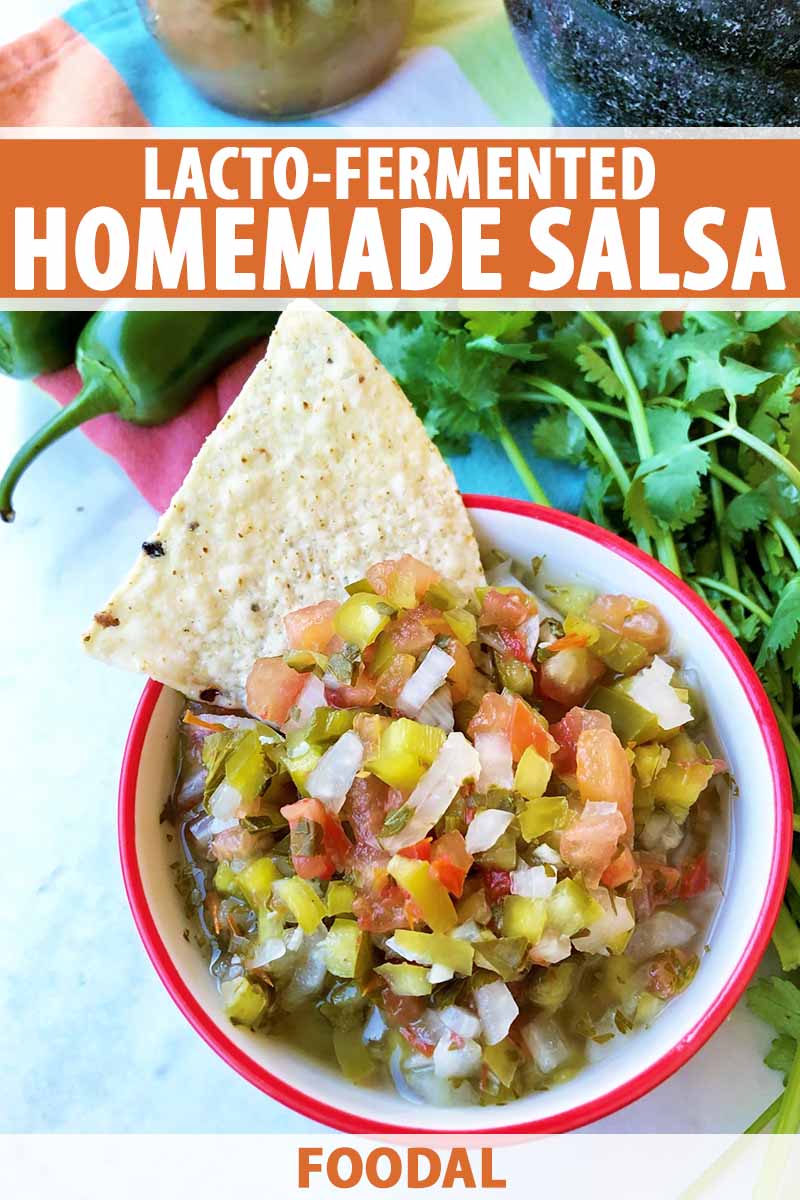
Four years my senior, my older and only sibling Sarah is, in my opinion, the coolest person in the world. Though we never fought or argued like sisters traditionally do, she made it clear when we were younger that I didn’t need to follow her around all the time.
If she was listening to New Kids on the Block, I would study every moment of the Hangin’ Tough music video so I could partake in her midday living room dance parties. If she was playing dress up with her friends, I would ransack the house and layer on every bracelet, jean skirt, and scrunchie I could find.
And when it came to our teenage years, there was one habit Sarah couldn’t get enough of with her girlfriends – and naturally, I followed suit. It wasn’t shopping. It wasn’t practicing putting on eyeliner. It wasn’t snagging sips from the liquor cabinet.
It was chips and salsa.
There was nothing I loved more than cozying up to my sister and her best gal pals in the basement while Clueless played in a loop on the bulky downstairs television and we chomped our way through infinite bags of tortilla triangles and jars of thick, citrusy salsa.
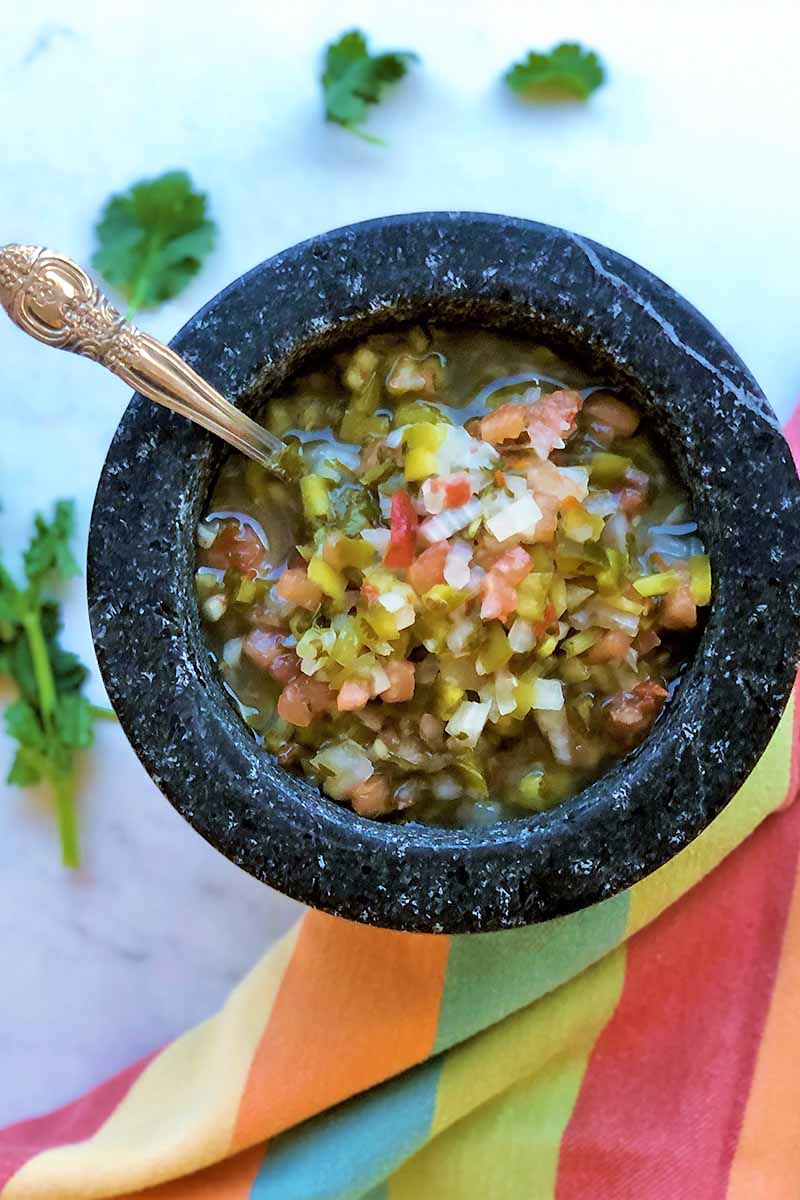
As an adult(ish-type-person), my culinary skills have flourished and I’ve been making my own varieties of homemade salsa for years. But it wasn’t until I learned about lacto-fermentation – and tackled this pickle recipe I’m quite proud of – that I discovered a whole world of food preservation I didn’t even know existed.
If you’re unfamiliar with this timeless process, here’s the gist. Lacto-fermentation specifically utilizes lactic-acid-producing bacteria to preserve whatever ingredients you’ve stuffed into your mason jars.
These bacteria (along with some yeasts) break down the sugars in the food and remove the oxygen, thus forming lactic acid and carbon dioxide – which is where you get those furious bubbles and a sharp, delightful acidity.
Some foods naturally contain the lactic acid bacteria (like cabbage and cucumbers) and ferment like pros when dunked into salty brines. But if you’ve ever canned pickles, don’t forget that these are two different methods.
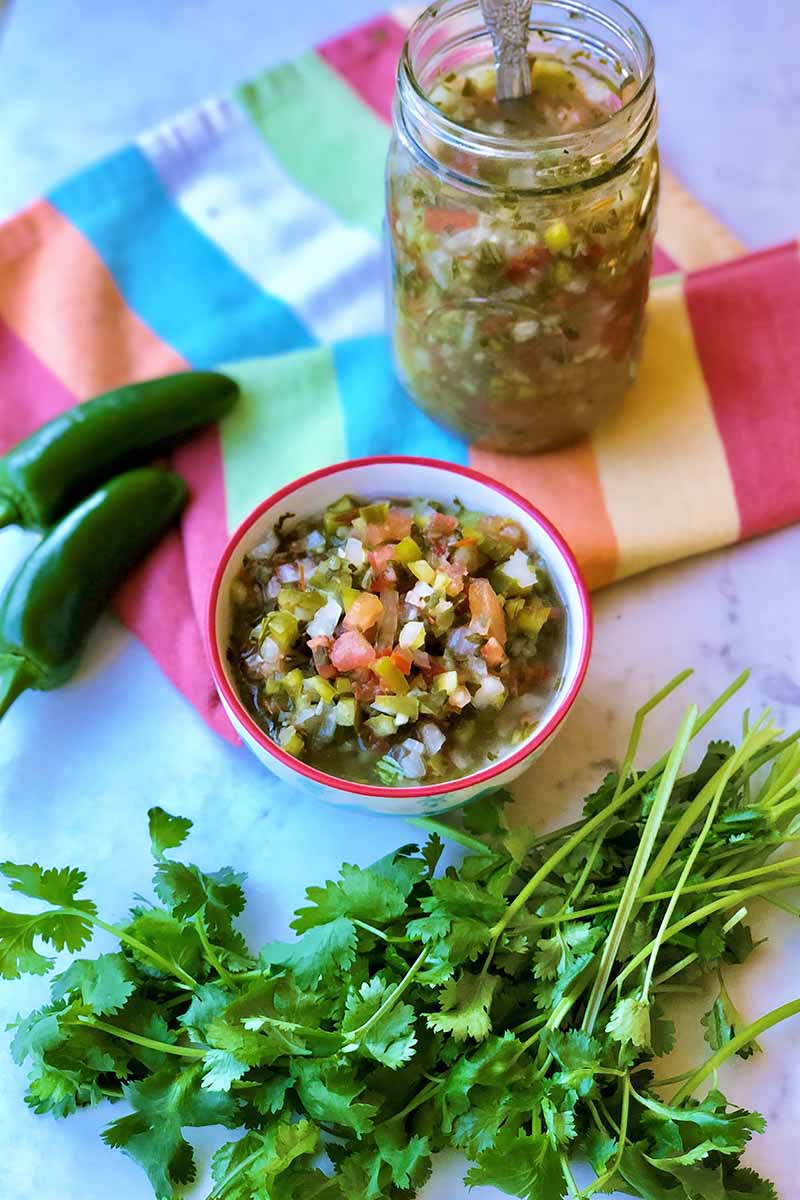
While canning uses heat to sterilize the food and reduce the growth of harmful organisms, lacto-fermentation uses live bacteria for the same purpose. In addition to the distinctly savory flavor that fermented foods offer, they bring multiple health benefits to the table.
Kimchi, for example, contains amino acids that are known to help reduce the risk of heart disease and battle inflammation, infections, potentially certain types of cancer, and even obesity. And as far as olives go, the briny fermented variety serves as an abundant source of living bacteria and probiotics, as opposed to the canned and processed ones, which sadly do not.
Good gut health, boosted immune function, and added nutrients are just a few other advantages fermented foods have to share.
But enough science. Let’s dish on the deliciousness.
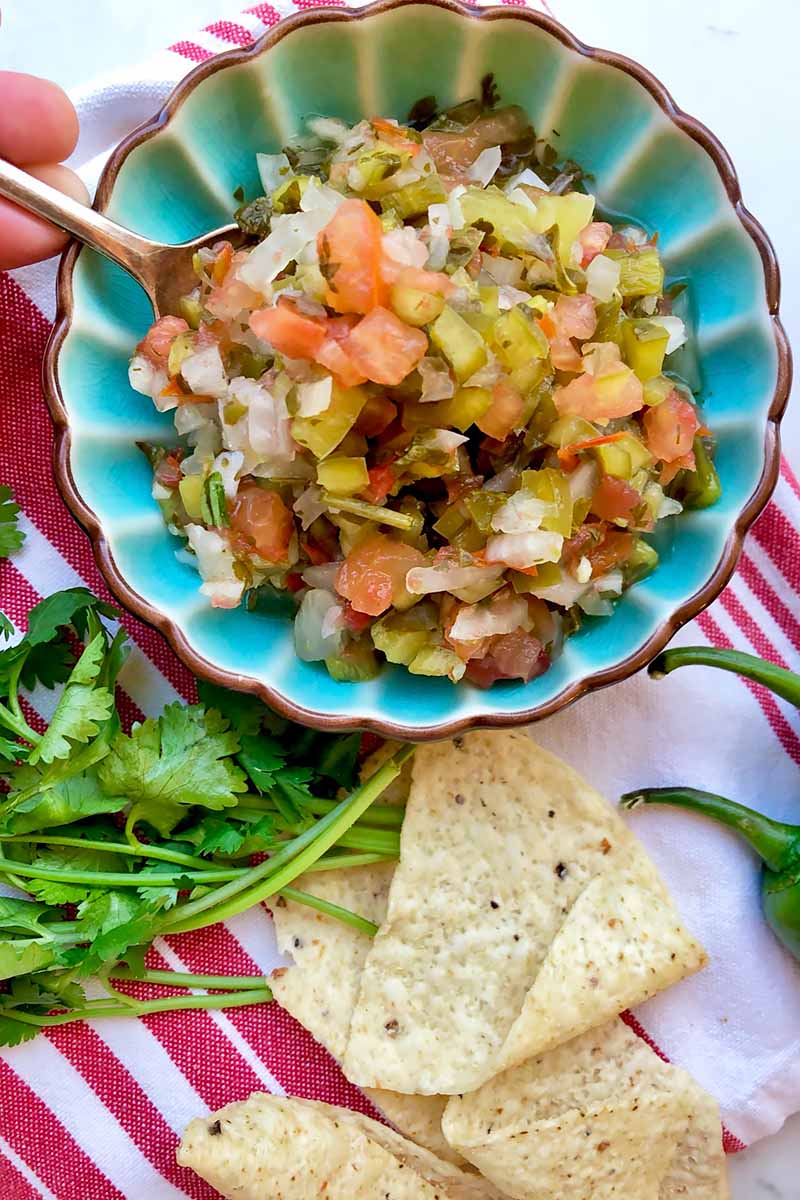
You could go as basic with the ingredients as you please, as the process simply involves submerging veggies in salt water. But for my salsa, I go heavy on the peppers and oniony notes as opposed to loading up on tomatoes.
Pale green cubanelles – with their crisp, thinner skins – add a sweet yet rich pop of flavor. Green bells bring a grassy crunch, while jalapenos come hollering with all the heat. Sharp, raw white onions and garlic keep things savory.
You can always twist the lid off a jar when a condiment craving strikes, but taking the time and patience required to ferment your salsa from scratch is far more satisfying. Even freshly-made salsa only lasts a few days, whereas this fermented mixture can be preserved in the fridge for months.
The bright, bubbly flavor alone is enough reason to give this recipe a shot, but your immune system and gut that are thriving on the good bacteria for days to come is an added bonus you just can’t deny.
Now that’s the kind of snack attack I can get down with.
Print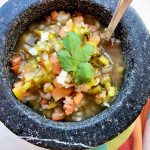
Lacto–Fermented Salsa
- Total Time: 2 weeks
- Yield: 1 quart (8 servings) 1x
Description
This probiotic-rich salsa is not only loaded with gut-boosting benefits, it has crisp cubanelle peppers, garlic, and grassy cilantro as well.
Ingredients
- 1 large jalapeno pepper, diced with seeds removed (about 1/4 cup)
- 1 medium green bell pepper, diced with ribs and seeds removed (about 1/2 cup)
- 2 cubanelle peppers, diced with ribs and seeds removed (about 1/2 cup)
- 4 plum tomatoes, diced (about 1 1/2 cups)
- 1 small white onion, diced (about 1/2 cup)
- 2 large cloves garlic, minced
- 1/4 cup chopped fresh cilantro
- 1 teaspoon sea salt
- 1 cup brine from lacto-fermented sauerkraut or pickles
- 2 cups purified water (filtered, spring, or bottled)
Instructions
- Place the jalapenos, bell peppers, cubanelles, tomatoes, onion, garlic, and cilantro in a large bowl and stir to combine. Add the mixture to a quart-size mason jar or 4 8-ounce jars.
- Whisk the salt into the brine until it’s dissolved and then add the water. Slowly pour the brine over the veggies until they are completely covered with liquid, leaving about 1 inch of space at the top.
- Tightly seal the jar(s) and place in a spot away from direct sunlight, like a kitchen cabinet. Allow the salsa to ferment at room temperature, approximately 65-72°F.
- After about 24 hours, bubbles will begin to form. Burp the jar every day (or every other day, depending on how fizzy your fermentation is) to release built up carbon dioxide by twisting the lid until you hear or feel the pressure releasing. You can also stir the salsa (by removing the lid instead of just “burping” the jar) to keep everything well-mixed, but make sure the veggies remain submerged below the surface of the liquid.
- Give the salsa a taste after 2 days. It should be carbonated and pleasantly vinegary. For a more intensely sour/fermented flavor, continue the fermentation process, and give it a taste every day or so to see how you like it.
- After 1-2 weeks, depending on the temperature in your house (warmer temperatures promote faster fermentation) and your desired level of fermentation, place the jar in the fridge. This will slow down the fermentation process, but the flavors will continue to develop.
- Fermented salsa may be stored in the fridge and enjoyed for up to 3-4 months.
Notes
If during the fermentation process your salsa begins to smell rancid or it grows pink or fuzzy mold, it’s gone bad. Discard it, sanitize your jar, and start again.
- Prep Time: 20 minutes
- Category: Salsa
- Method: Fermentation
- Cuisine: Condiments
Keywords: salsa, peppers, tomato, fermented
Cooking By the Numbers…
Step 1 – Chop the Vegetables
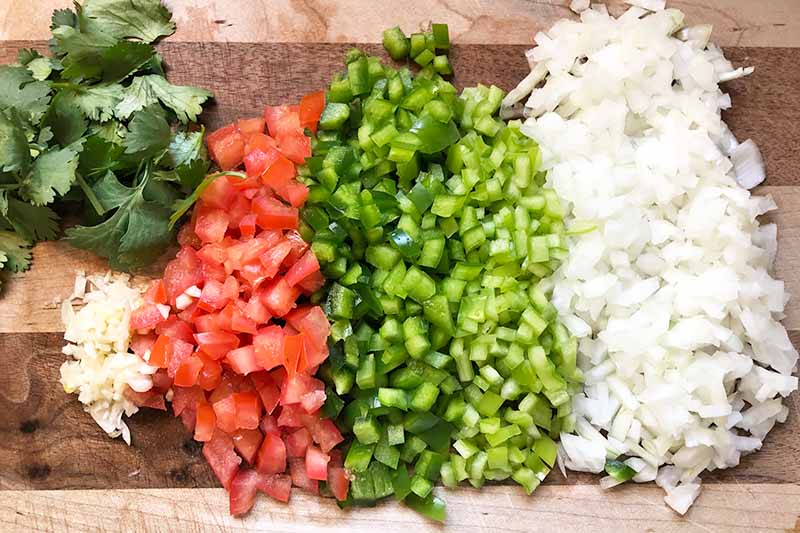
Chlorinated water can inhibit fermentation, so filtered, spring, or bottled is best. If possible, rinse the vegetables in purified water as well (rather than tap water) before dicing.
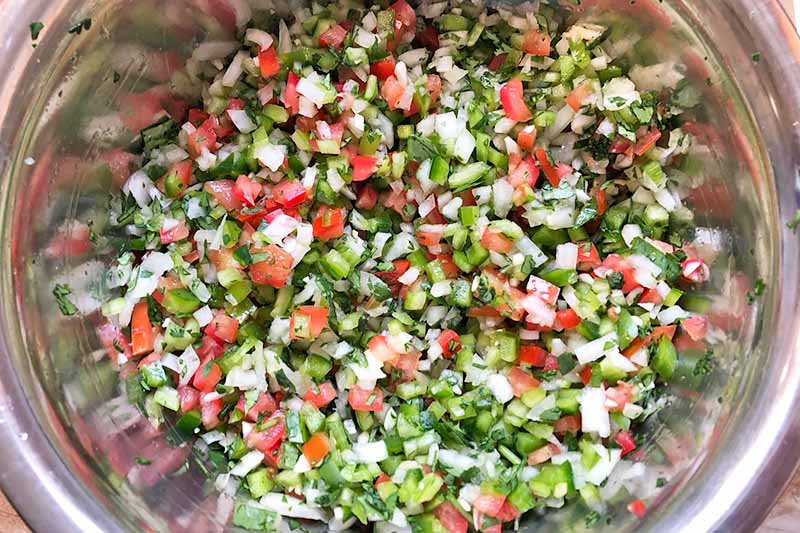
Dice the jalapenos, bell peppers, cubanelles, tomatoes, onions, garlic, and cilantro and place them in a large bowl. Stir to combine, and then add the mixture to a quart-size mason jar or 4 8-ounce jars.
Step 2 – Prepare the Brine and Pour over Vegetables
Whisk the salt into the brine until it’s dissolved and then add the water.

Using a store-bought (read: already cultured) brine from something like sauerkraut or pickles can speed up the process since the bacteria are already at work. You also get the benefit of some added flavor.
I like to use the brine left over from a jar of Wildbrine brand garlic and dill sauerkraut or kimchi when opting to reuse a store-bought brine, or you could give this sauerkraut from McClure’s in Detroit a try, available via Mouth.com.
Slowly pour the brine over the veggies until they are completely covered with liquid, but there’s still about 1 inch of room at the top.
Step 3 – Seal the Lids and Begin the Fermentation Process
Tightly seal the jar(s) and place in a spot that’s out of the way and away from direct sunlight and other heat sources, like a pantry or kitchen cabinet.

Allow the salsa to ferment at room temperature (approximately 65 to 72°F). After about 24 hours, bubbles will begin to form.
The ferment will come to a standstill below 65°F, so you want to make sure it is warm enough. Within the range of 65 to 72°F, the bacteria produce the highest levels of lactic acid, which is what produces that delightfully sour flavor profile.
Although the salsa will be ready to eat after a minimum of 2 days, which is when you should begin to taste it, it’s best to continue fermenting, which will further enhance and develop the flavor and probiotic benefits.
Step 4 – Burp the Jars
Burp the jar every day to release built up carbon dioxide, or at least every other day, depending on how fizzy your fermentation is. Just twist the lid until you hear or feel the pressure releasing. If your salsa is especially bubbly, twist the lids on and off quickly over the sink in case of any overflow.
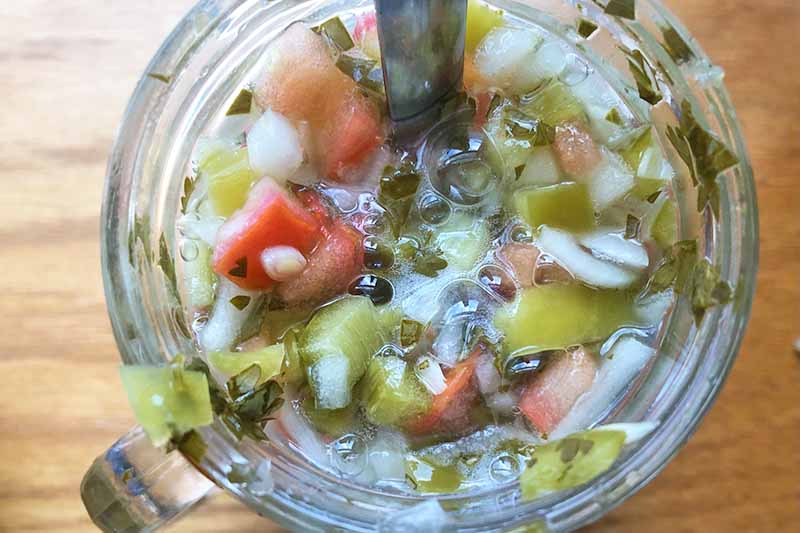
You can also stir the salsa to keep everything well mixed if you prefer, by removing the lid instead of just “burping” it.
It’s important to keep the vegetables submerged below the brine so they’re not exposed to oxygen. If they don’t stay submerged on their own, you can use weights specifically designed for fermenting, or a homemade cartouche like a piece of plastic, the skin of an onion, or a large pepper slice to hold them down.
If you’re planning to become a more than occasional fermenter, this kit from Nourished Essentials can really come in handy – it includes three lids that let gas escape so you don’t have to burp your jars, three easy-grip weights, and a pump to extract oxygen from your jars. The kit is available on Amazon.
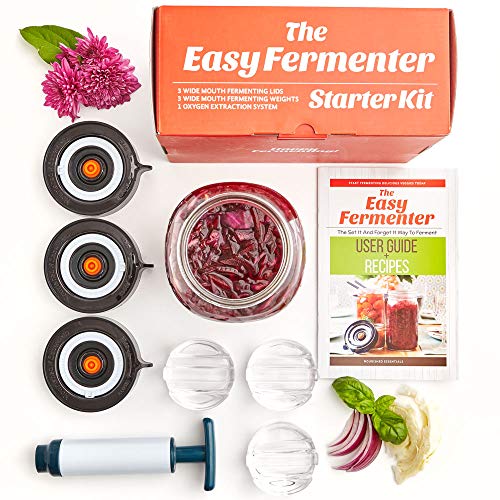
The Easy Fermenter Starter Kit, available on Amazon
When you start tasting your salsa after a few days, it should be carbonated and pleasantly vinegary. For a more intensely sour/fermented flavor, continue the fermentation process.
Higher temperatures encourage faster and more active fermentation. After 1-2 weeks, depending on the temperature in your house and your desired level of fermentation (which requires tasting the salsa to see if it’s done to your liking), place the jar in the fridge and periodically burp it to release any built-up gas pressure. Refrigerating it will slow down the fermentation process, but the flavors will continue to develop.
If during the fermentation process your salsa begins to smell rancid (as opposed to being pleasantly sour and funky) or it grows pink or fuzzy mold, these are signs that it has gone bad. Discard it and sanitize the jar before starting again.
If you note a white fuzzy substance, however, this is likely a type of kahm yeast that may appear while the salsa is at room temperature, not a potentially harmful mold. Kahm tends to show up on the surface of fermented vegetables in overly warm temperatures. It can be removed from the jar by scraping it off the surface any time it reappears.
Step 5 – Refrigerate
Placing the salsa in the fridge when it’s finished fermenting will preserve its shelf life, and keep any yeast from growing back.
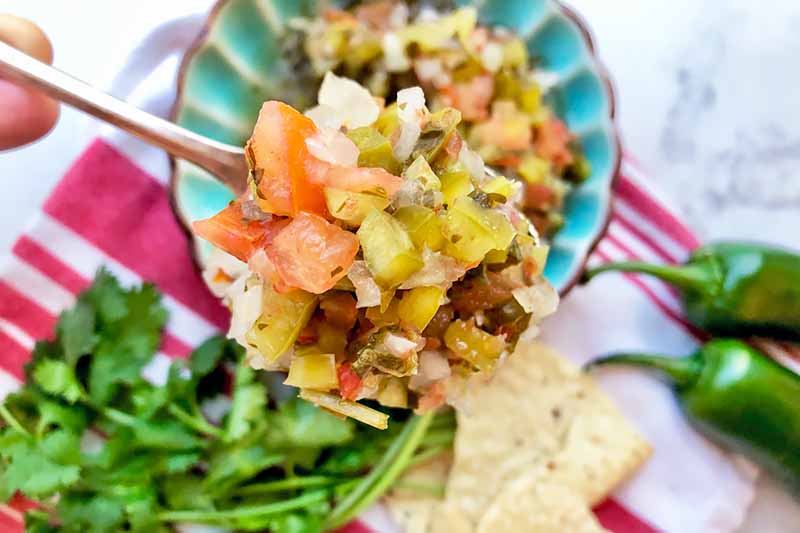
If the vegetables turn slimy, brown, or mushy while they are in the fridge, the salsa has likely spoiled and should be thrown away.
Fermented salsa may be stored in the fridge and enjoyed for up to 3-4 months.
Bright, Bubbly, and Bursting with Benefits
If the concept of “lacto-fermentation” sounds intimidating, let me put your mind at ease.
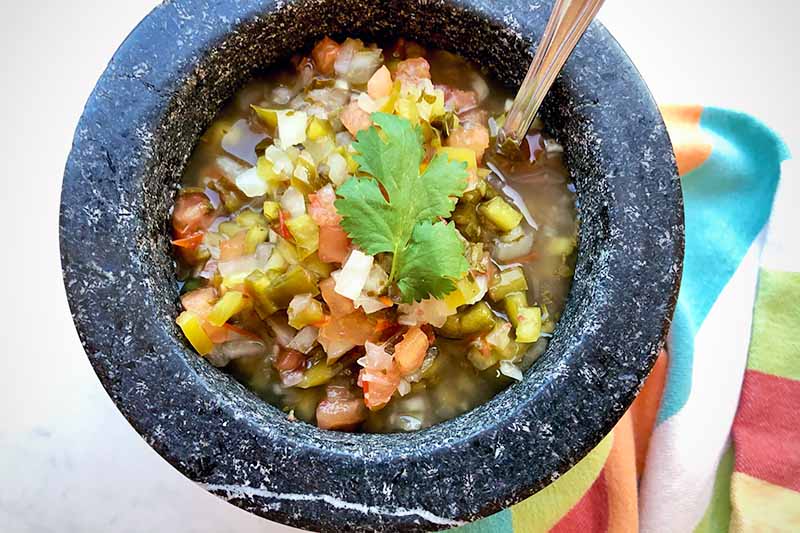
Can you chop tomatoes, onions, and peppers? Do you have salt and water nearby?
Boom! You’ve just met the standards for whipping up this salsa, no fancy fermentation tools, prior experience, or special outfits required.
Even if you’ve got picky eaters in the house who raise their eyebrows at funky kimchi or pungent kombucha, no worries here. Since salsa is already family-friendly and familiar for so many eaters, they won’t even suspect there’s something up with all the goodness you’ve snuck into their bellies.
In the mood for even more fermentation fun? Give these gut-friendly recipes a try next:
- Spicy Chocolate-Cranberry Mole
- Making Shrubs and Drinking Vinegars: Tasty Cocktails and Healthy Mocktails
- Mastering the Art of Artisan Sourdough Bread
All-aboard the lacto-fermentation train! Tell us what else you’re stuffing into mason jars and patiently staring at in the comments below. And don’t forget to give this recipe a five-star rating if you loved it.
Photos by Fanny Slater, © Ask the Experts, LLC. ALL RIGHTS RESERVED. See our TOS for more details. Originally published by Shanna Mallon on August 21, 2012. Last updated on April 26, 2021. Uncredited product photo via Nourished Essentials.
Nutritional information derived from a database of known generic and branded foods and ingredients and was not compiled by a registered dietitian or submitted for lab testing. It should be viewed as an approximation.
About Fanny Slater
Fanny Slater is a home-taught food enthusiast based in Wilmington, North Carolina who won the “Rachael Ray Show” Great American Cookbook Competition in 2014, and published her cookbook “Orange, Lavender & Figs” in 2016. Fanny is a food and beverage writer, recipe developer, and social media influencer. She was a co-host on the Food Network series “Kitchen Sink,” was featured on Cooking Channel’s longtime popular series “The Best Thing I Ever Ate,” and continues to appear regularly on the “Rachael Ray Show.”

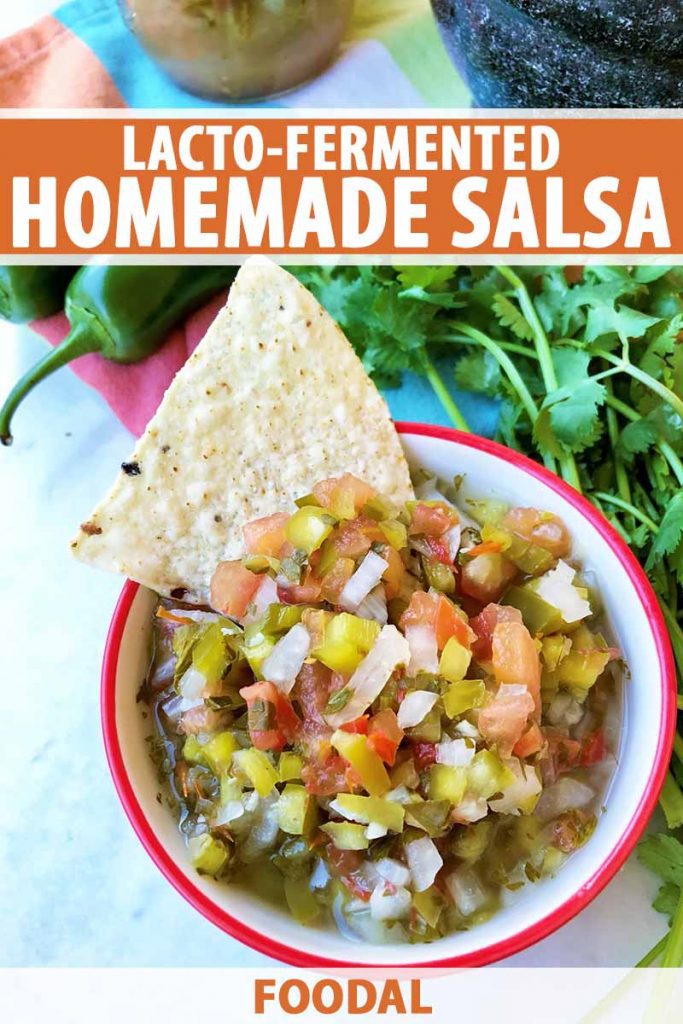
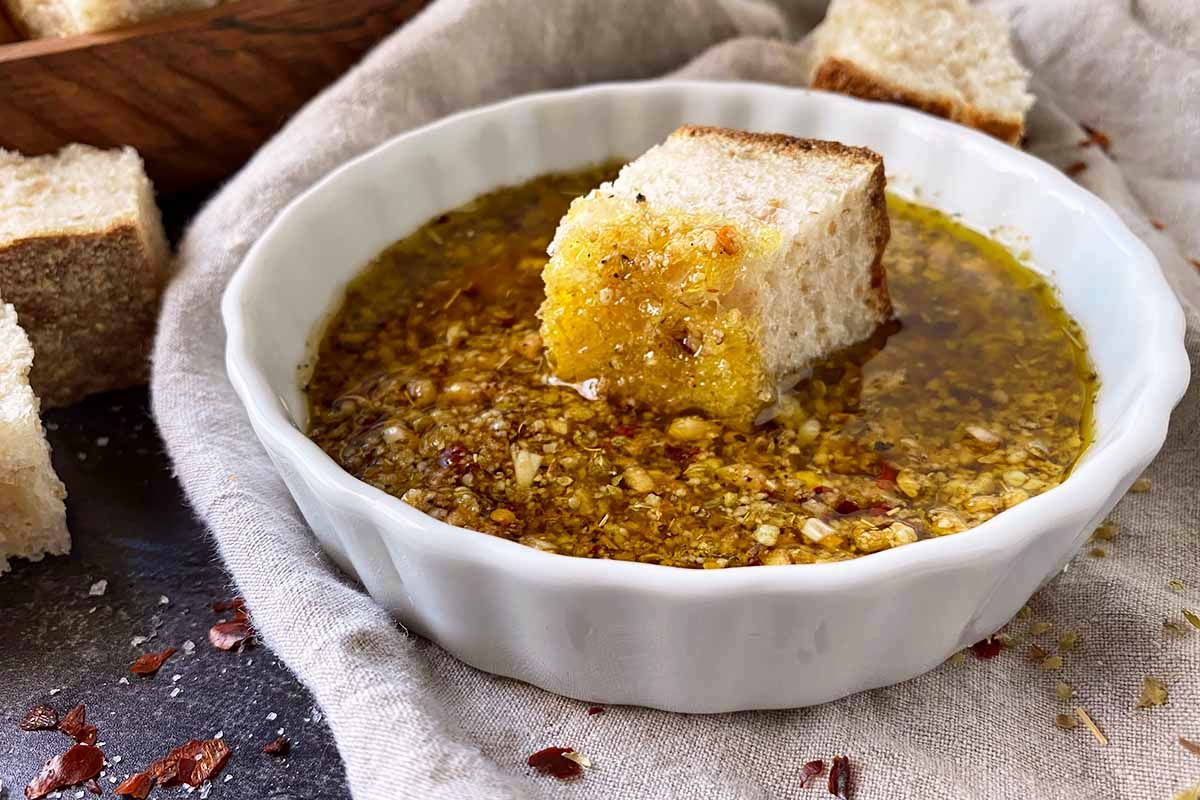
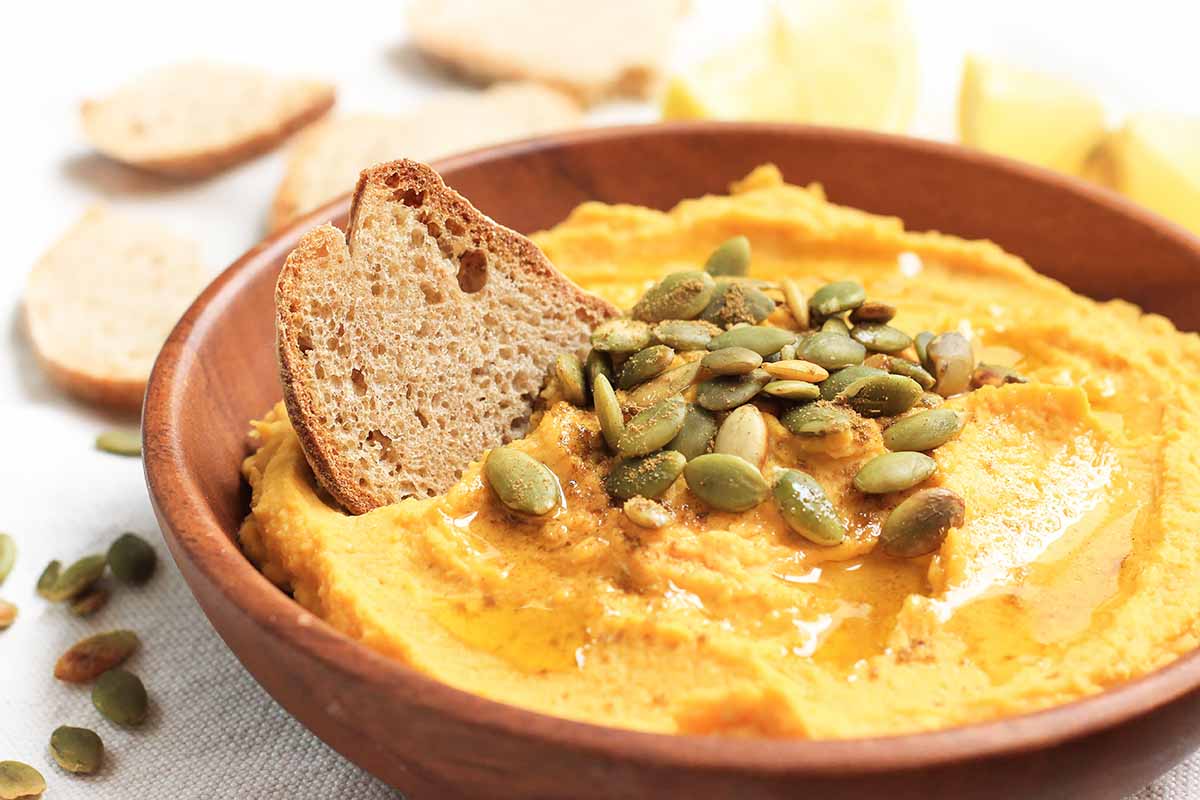
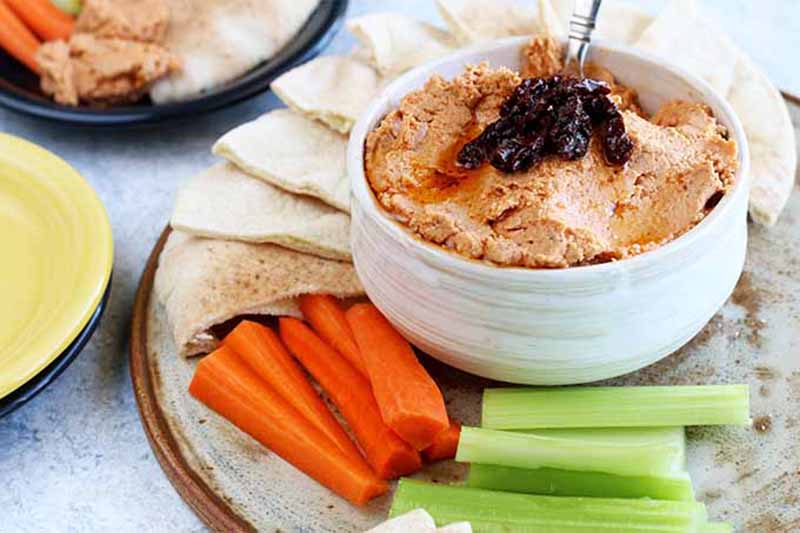
so dw made salsa for us recently, it was similar to what you made, except for the sauerkraut brine. what i’d like to know is how you managed to not start eating right away? our salsa lasted all of 2 days.
Yum! My sister-in-law, who grew up in Honduras, taught me a very similar method and it’s a slam-dunk every time.
This looks wonderful! I have Sandor Katz’s fermentation book but have never actually used it… I just can’t seem to get started. But this recipe looks totally doable, and I have most of those ingredients in my fridge right now, including the Bubbie’s Sauerkraut! So I might just have to give this a whirl tonight, thanks!
Awesome. Would love to hear what you think, Sarah!
I’ve never tried lacto-fermenting anything, but now I’m quite curious.
Would love to hear your thoughts on fermenting if you try it; dramatic though it sounds, the notion has changed my world!
That’s so cool that you’re making your own mead! It’s an idea I’ve toyed with a lot, as I love mead, but the quantities of honey needed are a bit astounding. I haven’t experimented at all with lacto-fermentation – cool and informative post 🙂
thanks, Katie! I’m actually new to mead (BUT I LOVE IT) and you’re right: the amount of honey is wow. We’ve been getting ours from a local farmer and just biting the bullet, and I have to say, when we drank glasses last night, I would have sworn to you it was worth it.
It seems I get deep into fermenting in the summer months. Sauerkraut and kimchi recently, although I hadn’t thought about trying salsa. Looking forward to it!
Mmmm sauerkraut!
Once you described what lacto-fermented foods are, I was like, oh! All the foods I love! I have no doubt I’d love this salsa, yum.
And THAT is proof of the good head you have on your shoulders. Smart girl!
I just found your blog. I am worried about spending to much time here. 😉 Your recipes are awesome!!!
Thanks for that sweet comment, Farrah — I’m glad you commented and led me to your site, which is lovely!
I’ve been meaning to make my own sauerkraut lately, but I kept putting it off. I never knew you could ferment salsa too! This sounds incredible and I’m very curious. Your photos and stories are lovely as always.